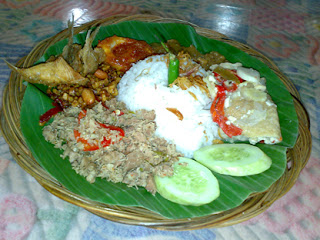Pekalongan regency is one of Central Java regencies with the capital city of Kajen. This regency is bounded with Java Ocean and Pekalongan city in north, Batang regency in east, Banjarnegara in south, and Pemalang regency in west.
The history of Pekalongan dated back to the early 12th century. A book written in 1178 by a Song dynasty official already had record of Pekalongan, then known to Chinese merchants as “Pukalong”, it was then a seaport of Java(then known as Dvapa); the king of Java lived at Pukalong, knotted his hair at the back of his head, while his people wore short hair and wrapped their body with colorfully weaved cloth.
Pekalongan became a part of the empire of the Sultanate of Mataram through treaty and marriage alliances by the early 17th century. The area was on the geographic periphery of the empire, which was based in interior central Java. However, it was a wealthy area, and by the end of the 17th century, the substantial money and produce it sent to the center made it a key part of Mataram’s realm. The area went into economic decline during the 18th century, and the Dutch East India Company began to gain substantial influence over the area’s political and economic life. The Dutch built a fort in the city in 1753 which still stands.
From the 1830s, the Pekalongan area became a major producer of sugar. Sugarcane had been grown in the area since early 12th century, as recorded in Chinese history books, but production expanded substantially during the mid-19th century due to Dutch efforts. Initially, production was boosted through compulsory corvée labor.
Pekalongan has long been known as batik city, and one of the batik production centers are located in District Buaran and Wiradesa. Some well known manufacturers such as batik Batik Humas, stand for Mohammed Hussein Assegaff. While the glove factory (cloth palekat) that famous in Pekalongan, among others is, Gadjah Duduk and WadiMoor.
After the Batik products, Pekalongan is also famous by its culinary, like Megono. Megono is young jackfruit in slices dressing by coconut sambal. It is tasty and spicy, it usually served while still hot with an additional menu like raw petai and fried fish. This rice is wrapped in teak leaves or can also be with banana leaves, and they used to call it by name “Sego Gori”.
Other Pecalongan food is Taoto, which is kind of spicy thick soup of meat broth which made of pekalongan taoco or fermented soybean.
Pindang Tetel, actually this kind of food is similar with Soto, but the difference is in the seasoning sauce, which is prepared by using the ripe fruit heron.
Like the most inhabitant, Pekalongan is mostly populated by Javanese people and spoke in Java language. Anyway, Pekalongan has different dialect among other Javanese language that particularly being recognize. Some of the words are added with suffix “ra”, like “ojo koyo kui ra”, which mean Don’t be like that.
Pekalongan has numbers of tourism destination beside the Batik producers, like Linggo Asri tourism object, Cinde waterfall, Watu Ireng tourism object, and others are in the form of pilgrimage tourisms.
Pekalongan is a calm and friendly
Source : http://indonesia-tourism.com/blog/pekalongan-central-java/
 Since it is held every sintren shows the dancers entered the spirit of
beautiful woman bound by diviner, with a note that things are done when
the dancers are truly in a state of pure (virgin). Sinteren played a
girl that is still sacred, assisted by the diviner and gamelan
accompanied 6 people according Development sintren dance as
entertainment and culture with dancers and assistants' bador '(joke). In
a game art DewiLanjar any such effect in the game Sintren, diviner
(puppeteer) DewiLanjar often invite the Spirit to enter in the game
Sintren. When it is successful then the players can Sintren look more
attractive and bring in more light-footed dance and mesmerize.
Since it is held every sintren shows the dancers entered the spirit of
beautiful woman bound by diviner, with a note that things are done when
the dancers are truly in a state of pure (virgin). Sinteren played a
girl that is still sacred, assisted by the diviner and gamelan
accompanied 6 people according Development sintren dance as
entertainment and culture with dancers and assistants' bador '(joke). In
a game art DewiLanjar any such effect in the game Sintren, diviner
(puppeteer) DewiLanjar often invite the Spirit to enter in the game
Sintren. When it is successful then the players can Sintren look more
attractive and bring in more light-footed dance and mesmerize. Art is very famous and popular in the region, especially Pantura
Pekalongan. In the era before the event is used to sinter the
communications and entertainment event for young people young woman
looking for a mate, other than that this art is used as a mediation
request for rain. While at this time Sintren still often played on the
days of National and welcomes guests to the official.
Art is very famous and popular in the region, especially Pantura
Pekalongan. In the era before the event is used to sinter the
communications and entertainment event for young people young woman
looking for a mate, other than that this art is used as a mediation
request for rain. While at this time Sintren still often played on the
days of National and welcomes guests to the official.



